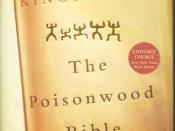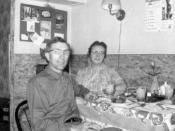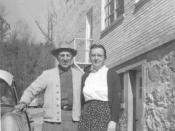While reading The Poisonwood Bible, I was fascinated by Kingsolver's extensive use of Lingala, the language used in the region of the Congo where the Price family lives. Lingala is a language in which each word has several meanings, and Kingsolver has the characters in the story use language to reflect themselves. Kingsolver also masterfully wields words to connote subtle ideas throughout the novel.
Throughout the novel are sprinkled many phrases in Lingala, phrases that are eventually learned or heard by any one of the narrators. For example, the villagers have names for three of the Price daughters. Leah, at first, is called "leba", meaning fig tree, and then later Anatole the schoolteacher calls her "beene-beene", meaning "as true as the truth can be." Adah is "benduka", "the crooked walker", but "benduka" spoken with a different emphasis, on the latter part of the word, is the name the villagers call a beautiful species of birds around their village.
Rachel they call "mvula", the Lingala word for a pale white termite that comes out after rain. The villagers were fascinated and also disgusted with Rachel's appearance, and her long, white-blond hair. Ironically, Rachel was completely obsessed with her looks.
Each of the Price daughters has their own unique relationship to the Lingala language, and also language in general. Rachel, portrayed as a "platinum blonde", not very intelligent girl, is very egotistical, and cares only for her appearance and her own comfort. Rachel constantly and uncaringly misuses words, both in Lingala and English. This literary technique helps show her as completely self-interested, ignoring the world around her. Adah, Leah's identical twin, is a cripple for most of the book, as the right side of her brain was deformed since birth, and the left side of her body paralyzed. Her outlook...


